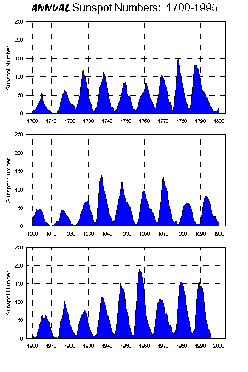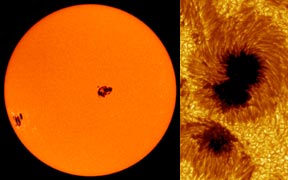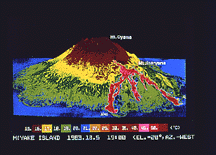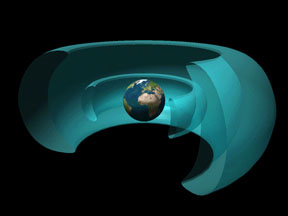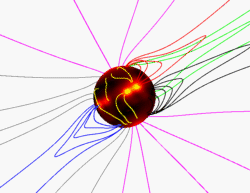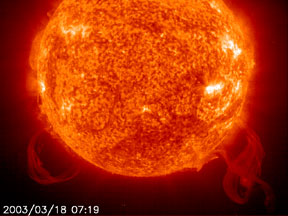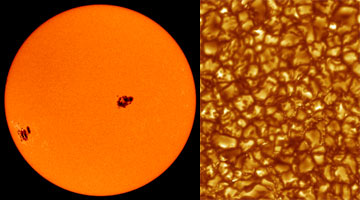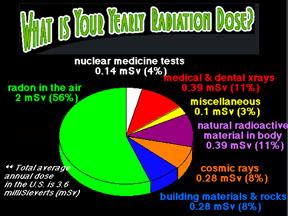Click on image for full size
Image courtesy NOAA/NGDC.
Space Weather: Quiet vs. Active Times
We tend to think of the Sun as constant and unchanging. However, most aspects of our neighborhood star do vary, some in dramatic fashion, over time scales as short as minutes and as long as billions of years.
Dark spots appear on the face of the Sun from time to time. The number, size, and locations of these sunspots varies over the years. Observational records, going back centuries, show that sunspot counts vary dramatically and regularly in an 11-year cycle. When sunspots are few, the Sun is sedate and solar storms are rare. When sunspots are plentiful, the Sun becomes unsettled and much more active. During peaks in solar activity huge explosions on the Sun (called solar flares) generate bursts of radiation and energetic particles. Active periods bring increased levels of ultraviolet radiation and X-ray emissions, more streamers and prominences above the Sun's surface, and an expansion of the solar atmosphere and heliosphere.
The level of activity on the Sun has consequences throughout our Solar System, including here on Earth. Satellites and astronauts are vulnerable to damage and injury from increased radiation levels at active times. Solar storms generate beautiful auroral light shows high in our atmosphere - the Southern and Northern Lights! Solar activity can also interrupt communications, disrupt electrical power systems, and hasten corrosion of pipelines. Variations in the Sun probably influence our weather and climate, though the exact form that those influences take is still being researched.
The Sun also changes over longer timescales. The 11-year sunspot cycle has been interrupted at times, and some scientists believe there are longer-term cyclical variations in solar activity. The Sun has gradually brightened (by roughly 30%) over its six billion year history, dramatically increasing the heat delivered to Earth's climate. Our star was also much more active in its youth, displaying wilder variations in activity level as compared to modern times.


